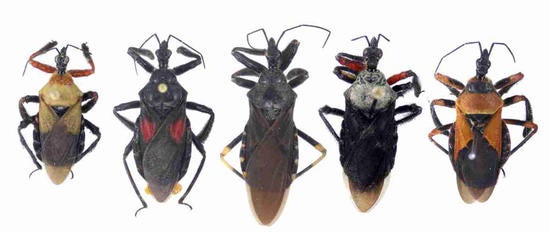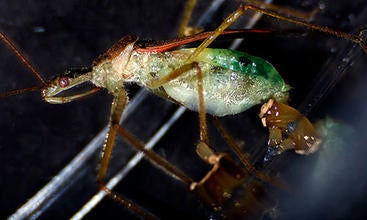Systematics of the Bee Killer Assassin Bugs of the Genus Apiomerus
Davis (1969) proposed the “resin bug” tribes Apiomerini, Diaspidini, and Ectinoderini to be monophyletic and the resin collecting to be synapomorphic for the group. This hypothesis was challenged by the Weirauch (2008) morphology-based cladistic analysis that proposed the resin bugs to be paraphyletic with the Apiomerini being more closely related to Diaspidini + Tegeini + Harpactorini. The relationships within Apiomerini have not been the focus of cladistic analyses using morphological or molecular data until very recently: Forero et al. (2013) analyzed relationships of Apiomerus using molecular data and the first combined morphological and molecular analysis includes representatives of all 13 fossil and extant taxa and traces the evolution of maternal care in the group (Forero and Weirauch, 2016).
In a parallel effort, we continue to explore the sticky trap behavior and its ontogeny in species of the genus Zelus and for this purpose we house cultures Zelus renardii and Zelus tetracanthus. Publications on comparative sticky trap morphology Zhang and Weirauch, 2013, the evolution of leg morphology within Harpactorini (Zhang and Weirauch, 2014), and the evolution of sticky trap strategies across Harpactorinae (Zhang et al., 2015).

